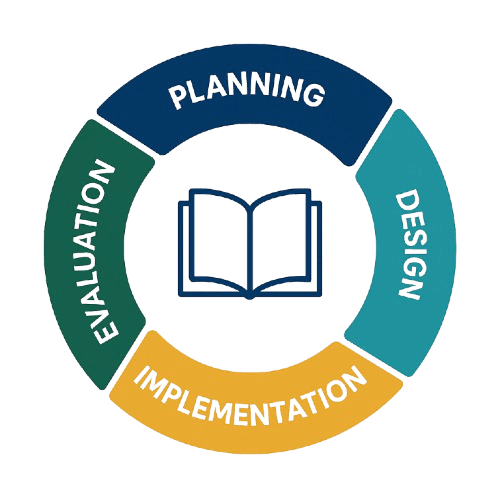
AI governance in higher education is no longer experimental. Boards are using it to shrink 500-page packets into briefs, surface real risks, and tie decisions to evidence. The same tools can also magnify blind spots if you skip controls. This article shows a practical way to capture value while protecting mission, students, and fiduciary responsibilities.
What Changed in 2025 and Why Boards Should Care
Standards grew teeth
ISO/IEC 42001:2025 formalized AI management systems. ISO/IEC 23894 and the NIST AI RMF moved from nice to have to expected scaffolding for algorithmic accountability. Public university systems also face pressure to brief stakeholders with SEC-style clarity on cyber and operational incidents.
Models improved, obligations expanded
Accuracy in summarization and forecasting rose, along with sharper questions about training data, bias, hallucinations, and update cadence. That demands stronger model risk management and change control.
Boards raised the bar
Trustees want less narrative and more signal. They expect scenario views, variance drivers, and a documented line from data to decision suitable for accreditors and counsel.
Where AI Delivers Value Now

Packet production and records
AI trims sprawling board materials into concise briefs that link back to the exact source page, so trustees can verify facts quickly. It also produces clean redlines for policy updates and adds a plain-language note on what changed, why it matters, and which stakeholders are affected. The result is a smaller packet, clearer decisions, and a transparent audit trail.
Risk sensing and finance
Risk registers stop being static lists once AI converts them into visual heatmaps tied to thresholds the board adopts. Finance teams can generate three side-by-side scenarios for enrollment and cash, then test sensitivities such as discount rate or auxiliary revenue. Trustees see where the plan bends, where it breaks, and what levers actually move outcomes.
Student success and operations
Student analytics identify at-risk cohorts while enforcing privacy controls, then route cases through approved intervention playbooks with time stamps and outcomes. Those outcomes roll up as evidence for accreditation activities so accreditors can trace policy to results. On the operations side, IT and security alerts arrive pre-enriched with context, which helps analysts prioritize real incidents and close them faster without sifting through noise.
Privacy and bias guardrails
An effective program masks direct identifiers, minimizes fields to only what is necessary, logs prompts and outputs for audit, and regularly tests for admissions analytics bias and disparate performance.
The Operating Model Boards Can Adopt This Quarter
Oversight structure
Give AI a clear home in governance. Many institutions place oversight with Risk or Audit; others charter a Technology and Risk Committee that owns the model inventory, risk tiering, and control assurance. Pair the board committee with an executive AI council chaired by the provost or COO and staffed by general counsel, the CISO, the CIO, institutional research and analytics, student affairs, and accessibility leads. This council prepares quarterly updates, clears new use cases, and coordinates training and change management.

Decision rights and human review
Write down who can propose, approve, and retire AI use cases, and set criteria for each step. Specify when human review is mandatory, especially for decisions that affect students, faculty, or institutional finances. Define escalation paths for exceptions, the minimum evidence required to proceed, and the conditions that trigger a rollback. Treat these rules as part of the institution’s control environment so auditors and accreditors can trace decisions back to approved policy.
Single source of truth
Maintain a model register that functions like a ledger for every AI system in use. Each entry should list the owner, purpose, data sources, legal basis for processing, risk tier, validation status and date, monitoring metrics, access roles, retention schedule, and planned retirement date. Keep this register current and tie it to change tickets, evaluation cards, and incident records so leadership can see the full lifecycle at a glance.
The Compliance Map You Can Put in the Board Packet
For state authorization, use the term state licensing agency for approvals and renewals, and track each state’s disclosure and complaint paths along with records requirements. For accreditation, connect AI-enabled processes to standards from MSCHE, NECHE, WSCUC, DEAC, ACCSC, COE, and ABHES where relevant, and keep evidence of policy, procedure, and outcomes. For student data, enforce FERPA and, for residents in comprehensive privacy states, align to CPRA or CCPA purpose limits, deletion rights, and vendor duties. For accessibility, ensure Section 508 and ADA compliance for generated PDFs, slides, and web pages with documented checks and remediation. In procurement, require a software bill of materials, complete vendor due diligence, and log any cross-border data transfers; do not allow vendor training on institutional content unless explicitly agreed.
Risk and Control Practices That Scale
Risk tiering should distinguish Tier 1 decisions that materially affect people or finances from Tier 2 efficiency tools and Tier 3 experiments in sandboxes. Validation relies on evaluation cards and model cards that summarize intended use, test sets, error rates, and fairness metrics, with scheduled revalidation. Red teaming should probe for prompt injection, data leakage, jailbreaks, and bias regressions before each production release and at each major update. Incident readiness requires an AI incident playbook aligned to the cyber plan, with thresholds for notifying leadership and, when applicable, the public. Third-party governance depends on contractual audit rights, uptime service-level credits, and deletion proofs at exit.

Data and Model Governance That Keeps You Out of Trouble
Minimize data across all pipelines and set specific retention and destruction schedules for prompts, outputs, and logs. Restrict access with roles and multi-factor authentication for sensitive use. Log prompts to create an audit trail that supports investigations and reviews. Monitor drift each term, trigger alerts when performance or fairness crosses thresholds, and present status on a simple evaluation dashboard that senior leaders can read without a technical glossary.
Contract Terms That Prevent Unpleasant Surprises
Insist that vendors be explicit about data ownership, training rights, deletion timelines, security certifications, breach notification duties, accessibility conformance reports, and exit terms that produce usable export files. Require delivery of an SBOM at initial deployment and after significant releases.
A One-Page Board Dashboard You Can Reuse
A quarterly dashboard can summarize program health without drowning trustees in detail. List models in production and classify them by tier, then show how many were approved or retired during the period. Present three practical indicators: packet cycle time moving from 7.2 to 4.8 days with a target of five days or less, security alert triage median dropping from 47 to 22 minutes with a target of 30 minutes or less, and the admissions fairness gap comparing underrepresented admit rates to overall, holding within a three percent threshold. Note exceptions such as a hallucination spike in a catalog model that required rollback and a vendor that failed an RPO test with a corrective plan due on a specified date. Close with compliance attestations, for example FERPA training completion at 98 percent and Section 508 checks for AI-generated PDFs at a 94 percent pass rate with a goal of 98 percent.
A Short, Concrete ROI Calculation
If packet preparation across the president’s office, the board secretary, and counsel averages 30 hours each month, and AI summarization reduces that by 35 percent, the institution saves 10.5 hours monthly. At a blended 120 dollars per hour, that equals roughly 1,260 dollars per month or about 15,000 dollars per year, before accounting for faster time to decision.
Policy Excerpt You Can Adapt
AI outputs may inform decisions, but final determinations that affect students, faculty, staff, or material financial outcomes require human review. For Tier 1 models, include model version, validation date, and confidence indicators in the record of decision. Prompts and outputs are retained for 24 months and are subject to audit.
Trustee Skills Matrix and Heatmap
A board’s effectiveness rises when trustee skills align to strategy. Build a living matrix that lists each trustee across domains such as academic quality, finance, cyber and data, student success, workforce alignment, facilities, and fundraising. Use AI to keep the matrix current, visualize gaps as a heatmap, and recommend committee assignments. Nominating and governance can plan recruitment with term limits and strategic needs in view, and chairs can review the matrix before agenda setting to ensure the right expertise is present.

Accessibility Proof Built into the Workflow
Treat accessibility as a first-class control. The board-book workflow should run automated Section 508 checks on AI-generated PDFs and slide decks. Set a pass-rate target of 98 percent with a five-day remediation window before packet release. Track exceptions on the board dashboard and include remediation notes in the record.
Metrics That Trustees Can Scan
Three pilots make the value concrete. Packet preparation time fell from 7.2 days per cycle to 4.8 days per cycle and held below the five-day target for two consecutive quarters. Security alert triage median dropped from 47 minutes to 22 minutes while maintaining zero missed priority-one incidents, which satisfies the service goal. The admissions fairness gap narrowed from negative 3.8 percent to negative 1.9 percent compared to overall rates, meeting the threshold of plus or minus three percent with documented mitigations.
Contracts and Procurement That Fit Higher Ed
Every AI tool should arrive with contract language covering data ownership, training restrictions, audit rights, encryption at rest and in transit, uptime service levels, accessibility conformance, and deletion proofs. Ask for recent third-party assessment summaries and a disaster-recovery test report, and tie those artifacts to the model register entry for that tool.
The First 90 Days: A Practical Roadmap
Weeks one to two focus on standing up the AI council, adopting the inventory template, starting the model register, and publishing interim acceptable-use and records policies. Weeks three to four shift to privacy and accessibility reviews for active pilots while selecting quick wins such as packet summarization, a risk heatmap, and security alert enrichment, with role-based access and prompt logging enabled. Weeks five to six are the time to produce evaluation cards for Tier 1 models and to finalize a vendor addendum that covers data rights, deletion, and audit. Weeks seven to eight culminate in launching the board dashboard and running a tabletop AI incident drill. Weeks nine to ten deliver training for executives and assistants on approved prompts and red flags, along with validation of fairness metrics for admissions or aid analytics. Weeks eleven to twelve close the loop with a presentation of results, exceptions, and the next-quarter plan, followed by decommissioning of shadow tools and migration to approved platforms.
Three Mini-Cases in Brief
An admissions outreach model at a public university showed a 3.8 percent gap for a protected class during bias testing. Removing proxy features and adding counselor notes cut the gap to 1.9 percent and brought performance within the accepted threshold. A small private college used an AI assistant to develop revenue and expense scenarios; the board approved a mid-case path that assumed a 1.5 percent enrollment dip, a two percent tuition change, and targeted aid shifts, with a single slide summarizing sensitivities and decision points. A campus IT team enriched alerts with AI and reduced median triage time from 47 to 22 minutes without increasing missed priority-one incidents; prompts used non-sensitive metadata and were logged.

Questions Every Higher Ed Buyer Should Ask
Security and privacy questions should cover where data is stored, how it is segmented from other customers, and a contractual commitment that institutional content will not be used to train vendor models. Fit and integration should confirm support for the institution’s SIS, LMS, content repositories, and identity systems, along with delivery of a software bill of materials and single sign-on with multi-factor authentication. Resilience and support should disclose tested recovery point and recovery time objectives, the date of the last recovery test, and references from higher education customers in production. Enablement and change management should outline training materials, administrator controls, and a value measurement plan at 30, 60, and 90 days.
Considering a Private Model Environment
A private language model offers maximum control, but it requires MLOps staff, GPU capacity planning, patch management, and continuous evaluation. Most institutions adopt a hybrid approach in which commercial models with strict contracts cover general use while a private environment handles the most sensitive analytics.
Human Judgment Is Non-Negotiable
AI can highlight choices and compress work, but trustees own mission, risk appetite, and accountability. Keep three checkpoints: approve purpose, approve controls, and approve decisions that materially affect people or finances.
Evidence Kit Download
Please enter your name and email address, then submit the form to receive the Evidence Kit AI Governance PDF.

Next Steps for Institutions
Ready to evaluate your institution’s AI governance maturity or build your first board-ready dashboard?
Accreditation Expert Consulting offers a Free AI Readiness Consultation to help you identify gaps, strengthen compliance, and design a practical governance model.
Schedule your Free Consultation
📧 info@AccreditationXpert.com
📞 1-833-232-1400
🌐 www.AccreditationXpert.com (That’s X-P-E-R-T)
FAQ
How often should we re-validate Tier 1 models
At least once per term or after any major version change. Log results in the model register.
Do we need to retain every prompt forever
No. Align retention to records policy. Many institutions keep Tier 1 prompts and outputs for 12 to 24 months.
How do we brief accreditors on AI use
Share purpose, policy links, outcomes, and controls. Tie the narrative to standards for governance, assessment, and student support.
What belongs in the quarterly AI section of the board packet
Summarize inventory changes, incidents and exceptions, KPI trends, and approvals or retirements planned for the next quarter.
Can we use student data in pilots
Use student data only after privacy review with role controls and a documented purpose. Prefer de-identified or synthetic data in early tests.
How do we measure value without overclaiming
Track packet cycle time, alert triage median, rework rates, and fairness gaps against baselines for a full quarter, and include definitions of success.
Do we need a separate policy for research computing
Often yes. Research data, IRB constraints, and sponsor terms have distinct requirements that call for tailored controls.



